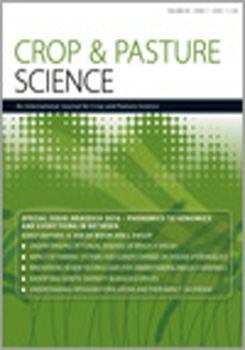Light leaf spot, caused by Pyrenopeziza brassicae, is the most damaging disease problem in oilseed rape (Brassica napus) in the United Kingdom. According to recent survey data, the severity of epidemics has increased progressively across the UK, with yield losses of up to £160M per annum in England and more severe epidemics in Scotland. Light leaf spot is a polycyclic disease, with primary inoculum consisting of airborne ascospores produced on diseased debris from the previous cropping season. Splash-dispersed conidia produced on diseased leaves are the main component of the secondary inoculum. Pyrenopeziza brassicae is also able to infect and cause considerable yield losses on vegetable brassicas, especially Brussels sprouts. There may be spread of light leaf spot among different Brassica species. Since they have a wide host range and frequent occurrence of sexual reproduction, P. brassicae populations are likely to have considerable genetic diversity, and evidence suggests population variations between different geographic regions, which need further study. Available disease-management tools are not sufficient to provide adequate control of the disease. There is a need to identify new sources of resistance, which can be integrated with fungicide applications to achieve sustainable management of light leaf spot. Several major resistance genes and quantitative trait loci have been identified in previous studies, but rapid improvements in the understanding of molecular mechanisms underpinning B. napus–P. brassicae interactions can be expected through exploitation of novel genetic and genomic information for brassicas and extracellular fungal pathogens.
How to translate text using browser tools
26 April 2017
Host–pathogen interactions in relation to management of light leaf spot disease (caused by Pyrenopeziza brassicae) on Brassica species
Chinthani S. Karandeni Dewage,
Coretta A. Klöppel,
Henrik U. Stotz,
Bruce D. L. Fitt

Crop and Pasture Science
Vol. 69 • No. 1
January 2018
Vol. 69 • No. 1
January 2018
crop losses
extracellular pathogens
pathogen population variation
QTL mapping
R-gene-mediated resistance




